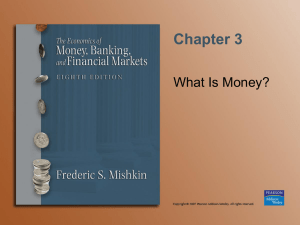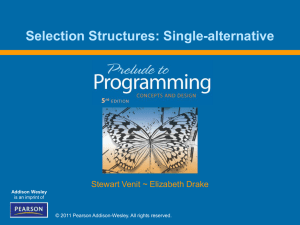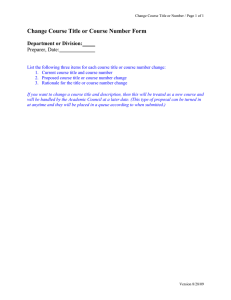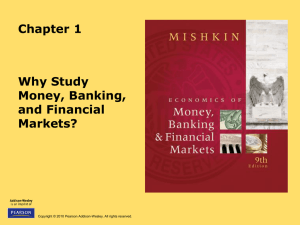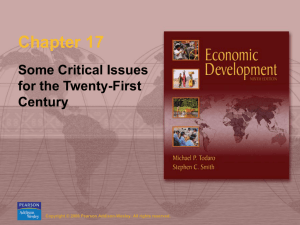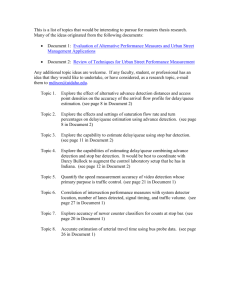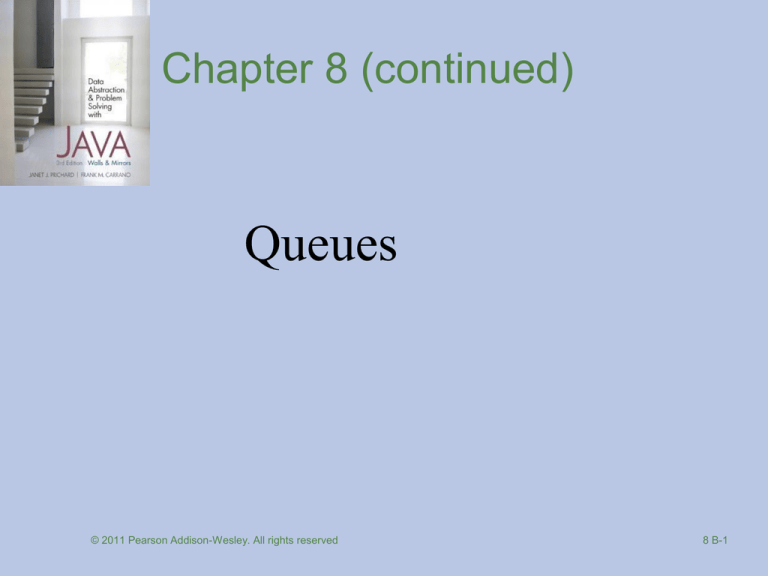
Chapter 8 (continued)
Queues
© 2011 Pearson Addison-Wesley. All rights reserved
8 B-1
An Implementation That Uses the
ADT List
• If the item in position 1 of a list list
represents the front of the queue, the
following implementations can be used
– dequeue()
list.remove(1)
– peek()
list.get(1)
© 2011 Pearson Addison-Wesley. All rights reserved
8 B-2
An Implementation That Uses the
ADT List
• If the item at the end of the list represents the back
of the queue, the following implementations can
be used
– enqueue(newItem)
list.add(list.size()+1, newItem)
Figure 8-13
An implementation that uses the ADT list
© 2011 Pearson Addison-Wesley. All rights reserved
8 B-3
The Java Collections Framework
Interface Queue
• JCF has a queue interface called Queue
• Derived from interface Collection
• Adds methods:
–
–
–
–
–
element: retrieves, but does not remove head
offer: inserts element into queue
peek: retrieves, but does not remove head
poll: retrieves and removes head
remove: retrieves and removes head
© 2011 Pearson Addison-Wesley. All rights reserved
5 B-4
The Java Collections Framework
Interface Deque
• Deque = double-ended queue
– (pronounced “deck”)
• Allows us to insert and delete from either end
– Useful methods: addFirst, addLast, peekFirst,
peekLast, getFirst, getLast, removeFirst, removeLast
• Thus, may function as both a stack and a queue
• Example: text editor
– Input characters using “stack” functionality: backspace event
causes a pop. Output characters using “queue” functionality.
© 2011 Pearson Addison-Wesley. All rights reserved
5 B-5
Comparing Implementations
• All of the implementations of the ADT queue
mentioned are ultimately either
– Array based
– Reference based
• Fixed size versus dynamic size
– A statically allocated array
• Prevents the enqueue operation from adding an item to the
queue if the array is full
– A resizable array or a reference-based implementation
• Does not impose this restriction on the enqueue operation
© 2011 Pearson Addison-Wesley. All rights reserved
8 B-6
Comparing Implementations
• Reference-based implementations
– A linked list implementation
• More efficient
– The ADT list implementation
• Simpler to write
© 2011 Pearson Addison-Wesley. All rights reserved
8 B-7
A Summary of Position-Oriented
ADTs
• Position-oriented ADTs
– List
– Stack
– Queue
• Stacks and queues
– Only the end positions can be accessed
• Lists
– All positions can be accessed
© 2011 Pearson Addison-Wesley. All rights reserved
8 B-8
A Summary of Position-Oriented
ADTs
• Stacks and queues are very similar
– Operations of stacks and queues can be paired
off as
• createStack and createQueue
• Stack isEmpty and queue isEmpty
• push and enqueue
• pop and dequeue
• Stack peek and queue peek
© 2011 Pearson Addison-Wesley. All rights reserved
8 B-9
A Summary of Position-Oriented
ADTs
• ADT list operations generalize stack and
queue operations
– length
– add
– remove
– get
© 2011 Pearson Addison-Wesley. All rights reserved
8 B-10
Application: Simulation
• Simulation
– A technique for modeling the behavior of both
natural and human-made systems
– Goal
• Generate statistics that summarize the performance
of an existing system
• Predict the performance of a proposed system
– Example
• A simulation of the behavior of a bank
© 2011 Pearson Addison-Wesley. All rights reserved
8 B-11
Application: Simulation
Figure 8-14a and 8-14b
A blank line at at time a) 0; b) 12
© 2011 Pearson Addison-Wesley. All rights reserved
8 B-12
Application: Simulation
Figure 8-14c and 8-14d
A blank line at at time c) 20; d) 38
© 2011 Pearson Addison-Wesley. All rights reserved
8 B-13
Application: Simulation
• An event-driven simulation
– Simulated time is advanced to the time of the next event
– Events are generated by a mathematical model that is
based on statistics and probability
• A time-driven simulation
– Simulated time is advanced by a single time unit
– The time of an event, such as an arrival or departure, is
determined randomly and compared with a simulated
clock
© 2011 Pearson Addison-Wesley. All rights reserved
8 B-14
Application: Simulation
• The bank simulation is concerned with
– Arrival events
• Indicate the arrival at the bank of a new customer
• External events: the input file specifies the times at which the
arrival events occur
– Departure events
• Indicate the departure from the bank of a customer who has
completed a transaction
• Internal events: the simulation determines the times at which
the departure events occur
© 2011 Pearson Addison-Wesley. All rights reserved
8 B-15
Application: Simulation
• An event list is needed to implement an event-driven
simulation
– An event list
• Keeps track of arrival and departure events that will occur but have
not occurred yet
• Contains at most one arrival event and one departure event
Figure 8-15
A typical instance of
the event list
© 2011 Pearson Addison-Wesley. All rights reserved
8 B-16
Summary
• The definition of the queue operations gives the
ADT queue first-in, first-out (FIFO) behavior
• A reference-based implementation of a queue uses
either
– A circular linked list
– A linear linked list with a head reference and a tail
reference
• An array-based implementation of a queue is
prone to rightward drift
– A circular array eliminates the problem of rightward
drift
© 2011 Pearson Addison-Wesley. All rights reserved
8 B-17
Summary
• To distinguish between the queue-full and queueempty conditions in a queue implementation that
uses a circular array, you can
– Count the number of items in the queue
– Use a full flag
– Leave one array location empty
• Models of real-world systems often use queues
– The event-driven simulation in this chapter uses a
queue to model a line of customers in a bank
© 2011 Pearson Addison-Wesley. All rights reserved
8 B-18
Summary
• Simulations
– Central to a simulation is the notion of simulated time
• In a time-driven simulation
– Simulated time is advanced by a single time unit
• In an event-driven simulation
– Simulated time is advanced to the time of the next event
– To implement an event-driven simulation, you maintain
an event list that contains events that have not yet
occurred
© 2011 Pearson Addison-Wesley. All rights reserved
8 B-19

